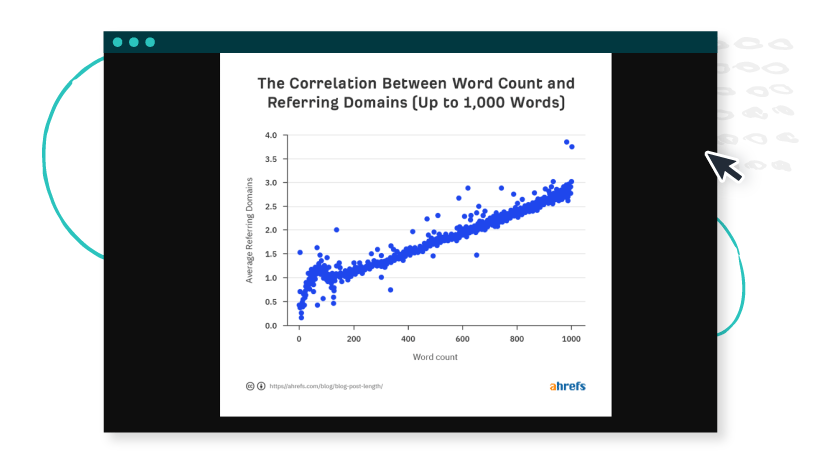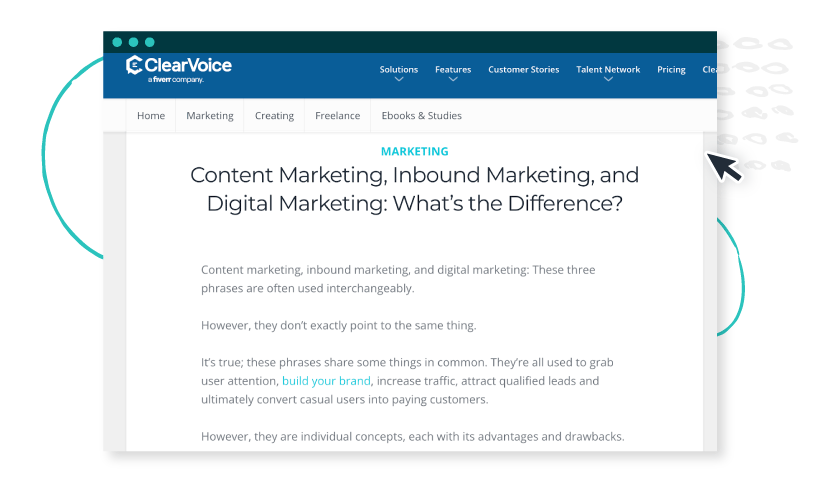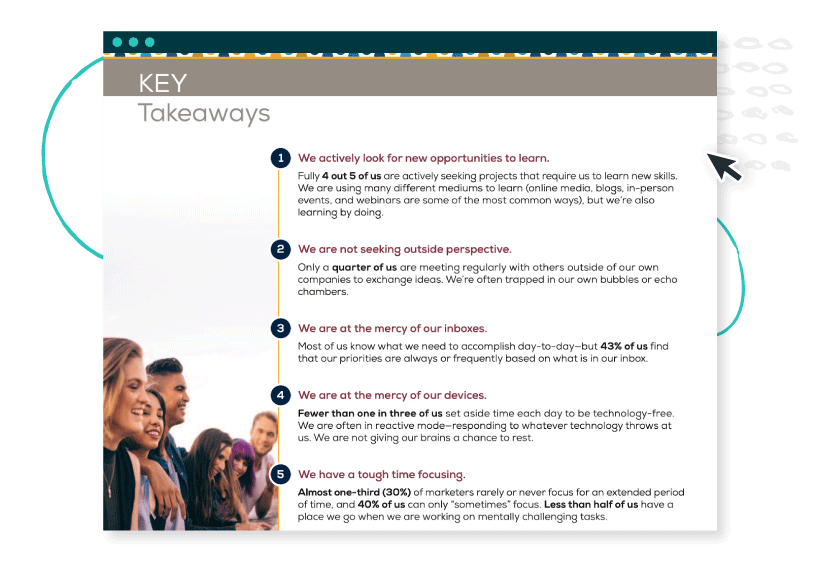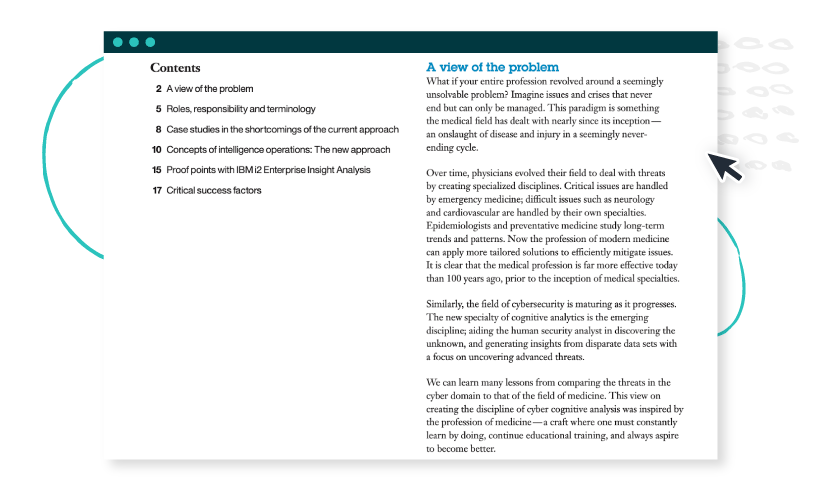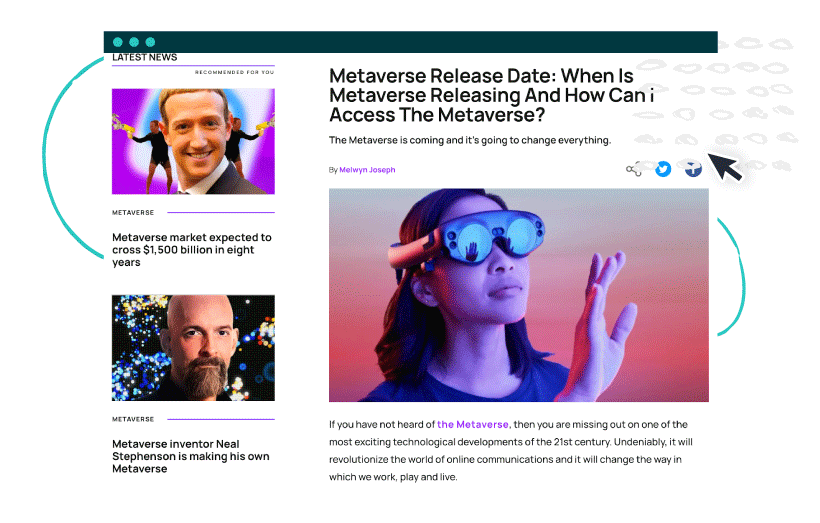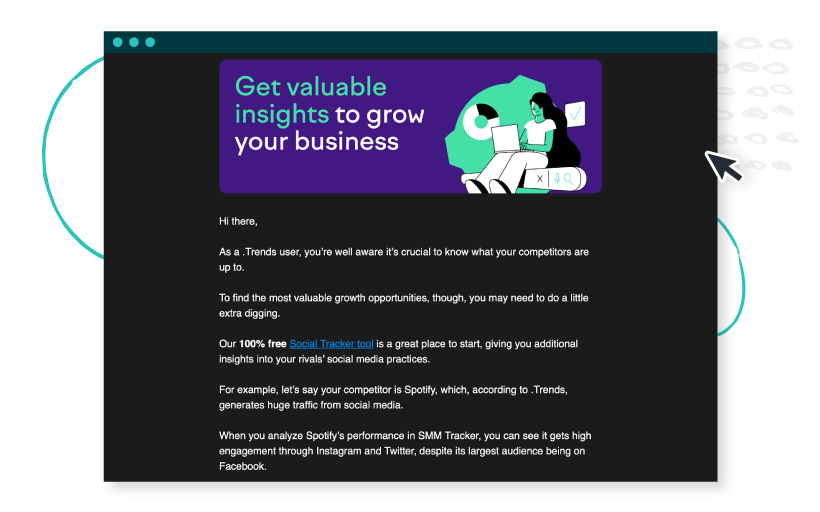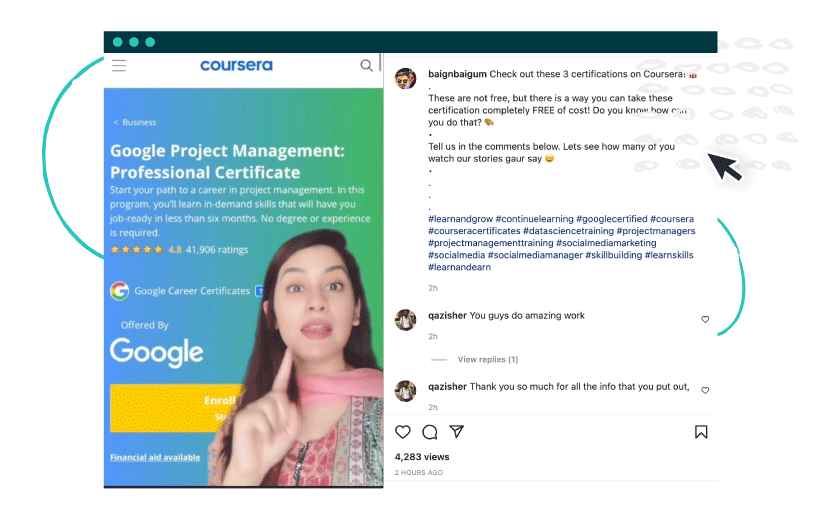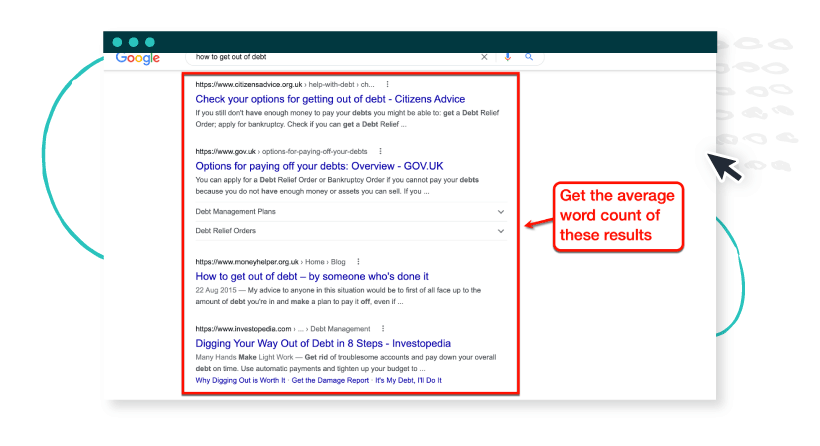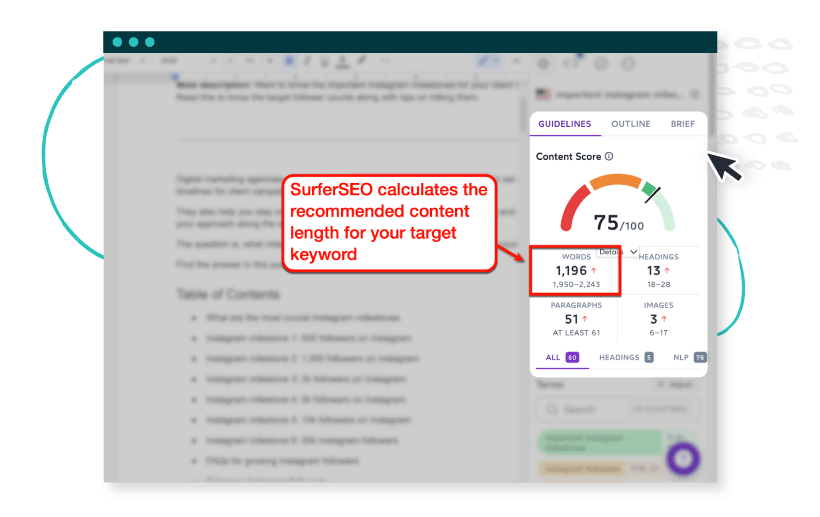Short-form or long-form content — which one is better?
Long-form content is often considered the gold standard by SEO experts. However, that doesn’t mean you should churn out 5,000-word articles every. single. time.
In some cases, short-form content performs better at accomplishing marketing goals and ranking pages. To help you decide which content you should create, continue reading this guide on short-form versus long-form content.

Short-form and long-form content: What’s the difference?
No specific word count determines whether a piece of content is short-form or long-form. Some sources peg short-form content at around 1,000 words. Others say short-form articles are below 1,200 words, while everything above is long-form content by default.
The truth is, there’s more to it than just the content’s average length. To understand this, here’s a quick review of what long-form and short-form content mean.
What is long-form content?
Write-ups with 1,200 words or more are considered long-form content by some marketers. But with too much focus on word counts, most marketers overlook the more glaring characteristic of long-form content: the format.
White papers, ebooks, case studies, and “ultimate” guides are the typical content formats used in a long-form content strategy. They can be anywhere from 1,000 to 20,000 words (or more) in length.
Long-form content is used in advanced strategies like creating skyscraper content and building a content pillar page. These content types exhaustively discuss the topic, covering every detail and answering every question.
As a result, long-form content projects rack up higher word counts than short-form content. But that doesn’t set a hard rule on how long should long-form content be.
What is short-form content?
Write-ups with 1,000 words or less are generally considered short-form content.
It’s not a hard rule, of course, since the average length isn’t the only marker to consider whether to use short- or long-form content.
Short-form content includes quick blog updates, social media posts, emails, and infographics. Unlike long-form content, short-form content is designed for speedy interactions with the target audience. They can be consumed from start to finish in just a few minutes.
So, what is better between short-form and long-form content? Let’s take a look at their benefits.
Benefits of long-form content
Due to their sheer length, long-form content is ideal for sharing exhaustive information with your readers.
Comprehensive articles are helpful in guiding leads through a brand’s marketing funnel, making them advantageous if your SEO end goal is to generate conversions.
Also, most long-form content generally ranks better on search engines than short-form content.
According to an Ahrefs study, longer content also naturally acquires more backlinks than short-form articles. This can be attributed to the amount of link-worthy information content marketers can pack in a single long-form piece.
Image Source: Ahrefs.com
Apart from backlinks, well-written long-form articles tend to perform better on several metrics — some of which directly impact search engine rankings:
- Dwell time: Users spend more time reading long-form content, which directly increases average dwell time. Search engines like Google see this as a strong indicator of content quality.
- Pages per session: Long-form content like pillar pages and skyscraper content rely on internal linking to provide more value to readers. This encourages them and search engine crawlers to see more of the website.
- Social media shares: Semrush data shows that longer articles tend to get up to 43% more shares on social media. In turn, they get more exposure to readers and potential link sources.
Lastly, periodically publishing long-form content helps establish brand authority.
Long-form content with original data, such as surveys, case studies, and white papers, helps brands showcase their expertise to the online community. In-depth guides that include verifiable data and valuable insights can also be used to the same effect.
Long-form content examples
Check out some real-world examples of great long-form content:
1. Content, Inbound, and Digital Marketing: What’s the Difference? – ClearVoice
Articles that thoroughly explore a topic — sprinkled with internal links to relevant pages — are the most common type of long-form content. In the article above, we made sure readers fully understand the uses, benefits, and advantages of the different types of marketing.
The piece also finished strong with actionable tips on how readers can put what they just learned into action.
2. 2019 Marketer Happiness Report – MarketingProfs
Image Source: MarketingProfs.com
Industry reports contain original data acquired by the brands that publish them. MarketingProfs took it to the next level by finding facts about a topic that no one else talks about: The happiness of marketers.
The report included data you can’t find anywhere else, like the reading habits of marketers and how they handle criticism. And since it’s the only reference available about those subjects, other brands that mention those facts will link to it.
3. The Awakening of Cyber Threat Hunting – IBM
Image Source: IBM.com
White papers are powerful B2B marketing tools that bolster a brand’s authority and accelerate lead generation. It’s built around a crucial issue, highlights the problems it causes, and shares the brand’s expert insights.
Some white papers are intended to promote the brand’s products as the best solutions for readers.
IBM’s white paper on cyber threat hunting, for instance, mentions their products like the Security QRadar and i2 Enterprise Insight Analysis.
Benefits of short-form content
Although long-form content generally performs better when it comes to SEO and lead generation, short-form content has its advantages.
For one, short-form content is much easier and faster to create.
Creating long-form content can take up to a week — sometimes more. That’s not accounting for the time you spend on content ideation, research, and optimization.
But with short-form content, the final draft can be completed within hours. Short-form content also ranks well in certain search queries, particularly those that look for specific answers.
Not all users are looking for “definitive guides” or “step-by-step tutorials.” Some have short attention spans that search for simple, to-the-point articles.
Other types of short-form content are also essential to a well-rounded digital marketing strategy, even if they’re not directly beneficial to SEO.
This includes social media posts, emails, and short-form videos.
Short-form content examples
Below are some of the best examples of short-form content:
1. Metaverse Release Date – Stealth Optional
Image Source: StealthOptional.com
Despite having only around 400 words, the post above by Stealth Optional ranks first for the keyword “when will metaverse launch.”
One of the main reasons for the post’s position is its alignment with search intent.
With the keyword “when will metaverse launch,” it’s clear that users are looking for a specific answer — not a “how-to” guide or an ebook. The short-form post satisfies their intent while keeping the experience short.
2. The Perfect Companion to Trends – Semrush
Image Source: Email from Semrush.com
Email is the short-form content that every marketer needs in their arsenal.
Emails are easy to create, impactful, and deliverable to a specific group of engaged audiences. They can also be automated with the right emailmarketing tools — streamlining user interactions while you focus on other aspects of your marketing.
The example above is from Semrush, which talks about their free social tracker tool. It’s only around 170 words long, but it does the job of promoting the platform’s new feature.
3. Three Certifications on Coursera – Baig & Baigum
Image Source: Instagram.com, @baignbaigum
Like the post above by Baig & Baigum, social media content caters to users looking for bite-sized content experiences. The short-form video gets straight to the point and explains the benefits of three online courses — all in a 54-second video.
Other than videos, other types of short-form content on social media include status updates, tweets, image quotes, and data visualizations.
Should you go long-form or short-form?
A successful SEO and digital marketing strategy use both long-form and short-form content. It depends on what you need to accomplish and what other competitors are doing.
Let’s say you want to rank for the keyword “how to get out of debt.” First, run a Google search and get the average word count of the top 10 results.
Image Source: Google.com
Second, analyze how these websites structure their content. What content type did they use (listicle, infographic, etc.)?
What subtopics do they cover?
Answering these questions helps you determine if you need long-form content to outrank competitors — or if short-form content will be enough. Alternatively, use a content optimization tool like SurferSEO to get instant content length recommendations.
It analyzes the top results for your target keyword to get the recommended word count, keywords, headings, and more.
Image Source: Docs.Google.com with SurferSEO extension
Short-Form vs. Long-Form Content: FAQs
1. How many words should an article have?
Your target content length depends on multiple factors, like your target keyword and marketing goal. But rather than focusing on word count, understand your audience and think of the best content type that will address their needs.
2. Is short-form content bad for SEO?
Short-form content may not be as effective as long-form content in most situations if you want to rank better on the search engines. But there are tons of search queries where short-form content can be enough to secure high rankings.
3. Why do people prefer shorter content?
Some users prefer short-form content because they’re quick and easy to consume. They may also prefer direct answers rather than digging up relevant information from a long-form guide.
4. What is skyscraper content?
Skyscraper content is content created using the Skyscraper Technique, which involves three steps:
- Look for high-ranking content
- Build something better and more thorough
- Promote it to referring domains that linked to the original post
Get high-performing content now
In digital marketing, addressing your users’ concerns matter more than shallow metrics like word count. Don’t decide arbitrarily whether you should use short-form or long-form content. Consider the needs of your target audience, then make sure your content addresses them thoroughly.
ClearVoice’s freelance writers can help you create short-form or long-form content. Get top-notch content that’s built to skyrocket user business. Use the form below to get started!

